Estimated reading time: 6 minutes
Seeing your beautiful stone fruit develop the brown, mushy spots that are the main symptom of Brown rot is disappointing, to say the least.
Plenty of times we’ve watched the rot creep through several trees before we’ve got it under control. We know how horrible that feels.
How do you keep brown rot off stone fruit?
It can be really devastating if the infection spreads from one piece of fruit to another, or (worst of all) from tree to tree. So during the fruit season, it’s really important to monitor for Brown rot.
The good news about brown rot (if there is any) is that it can be very preventable. If you’ve already noticed the disease in your trees, taking prompt action can usually stop it spreading.
The trick is to identify that you have the disease nice and early, and then know what to do about it!
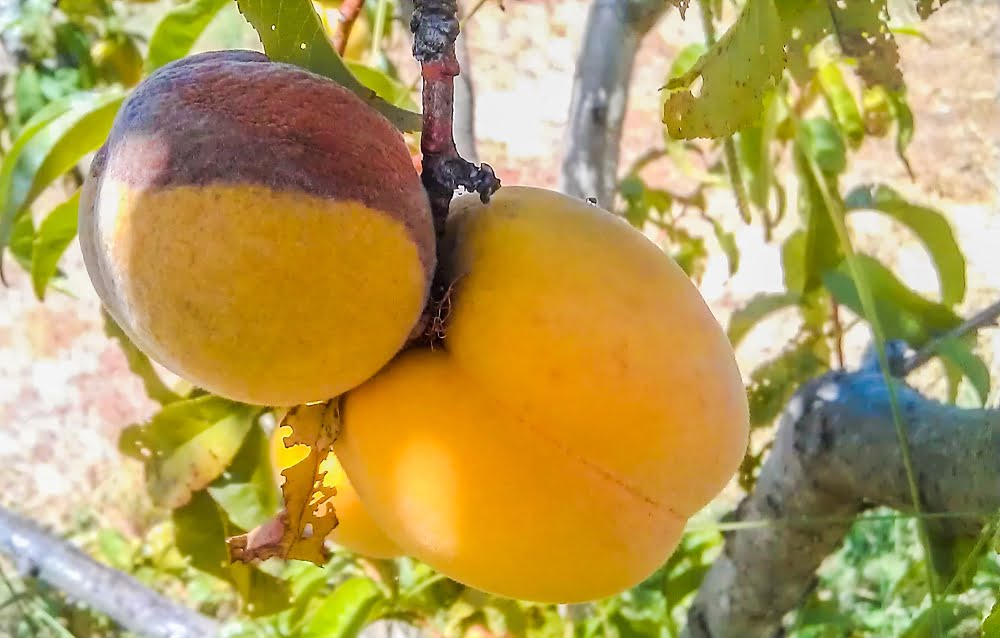
When does Brown rot develop?
In our part of the world in southeast Australia, our typically hot, dry conditions help to keep the disease at bay.
But a rainy season can quickly change that. Fungal disease LOVES rain.
A wet season (like when we’re in the middle of a La Nina weather pattern) definitely puts more pressure on the stone fruit. The main fruits that are vulnerable are apricots, peaches, and nectarines, but cherries and plums can also get the disease.
If you’ve had a rainy fruit season in your part of the world, you’re at a much higher risk of a Brown rot outbreak. It particularly loves weather that is both wet and warm.
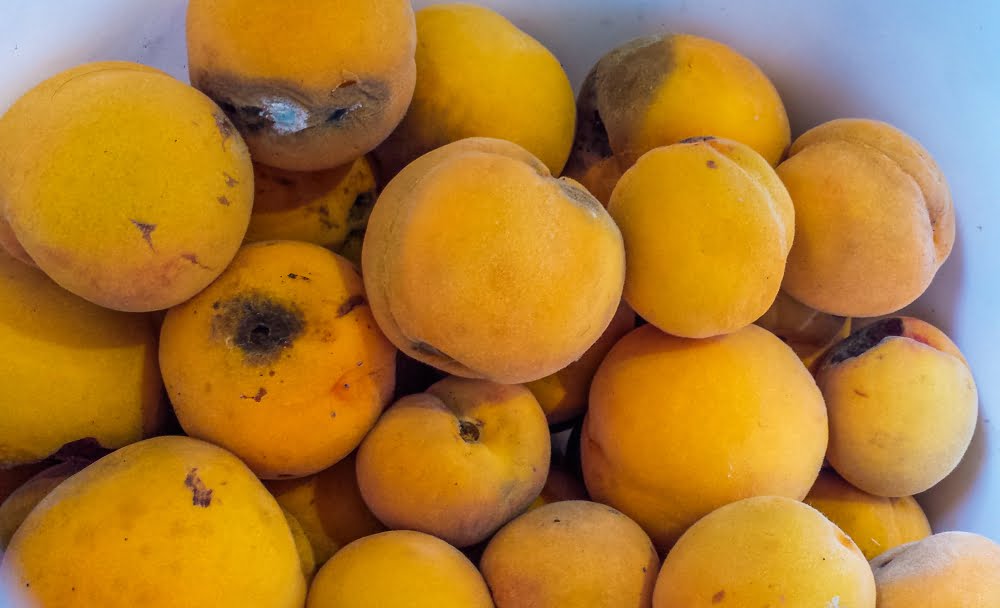
What is the best treatment for Brown rot?
It’s important to pick any fruit that shows symptoms. Also, pick up any fruit that has fallen to the ground. Make sure you dispose of it well away from the tree. Put in the compost, feed to animals, or cook it (after you cut off the bad bits, of course).
The infection can spread horrifyingly quickly, especially in rainy weather. Monitor your trees once a week, and remove infected fruit. This gives your remaining fruit the best chance of staying healthy.
There’s NO need to pull all the fruit off. That just needlessly wastes fruit that may still be able to be saved.
Even in organic gardens and farms, it’s possible to take preventive action to minimise the risk of diseases like Brown rot.
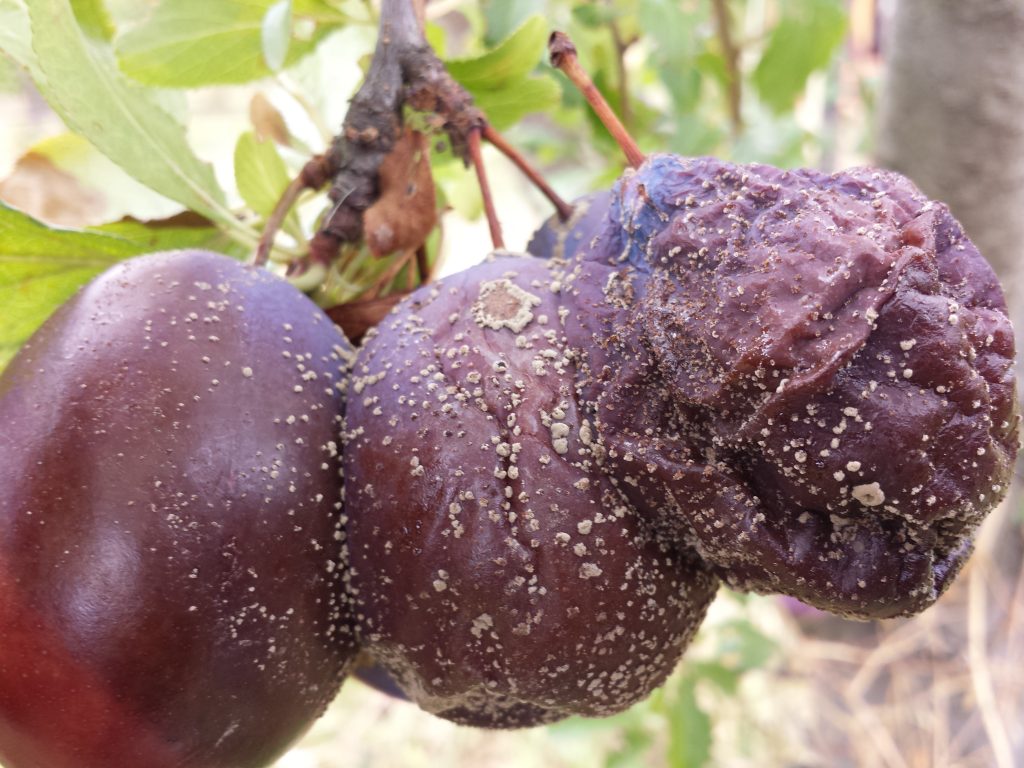
Prevention is better than cure
Good garden hygiene (such as removing fruit as described above) is one of the most important preventive actions. You should also aim to keep a ‘cover’ spray of one of the safe organic fungicides on your trees at all times.
If you only have a few trees to manage, you can quickly and simply do this job with a simple sprayer. With more trees to manage, you may want a more mechanised set-up.
But it can be really hard to figure out which is the best one for your exact situation, and what’s the best balance between budget and value.
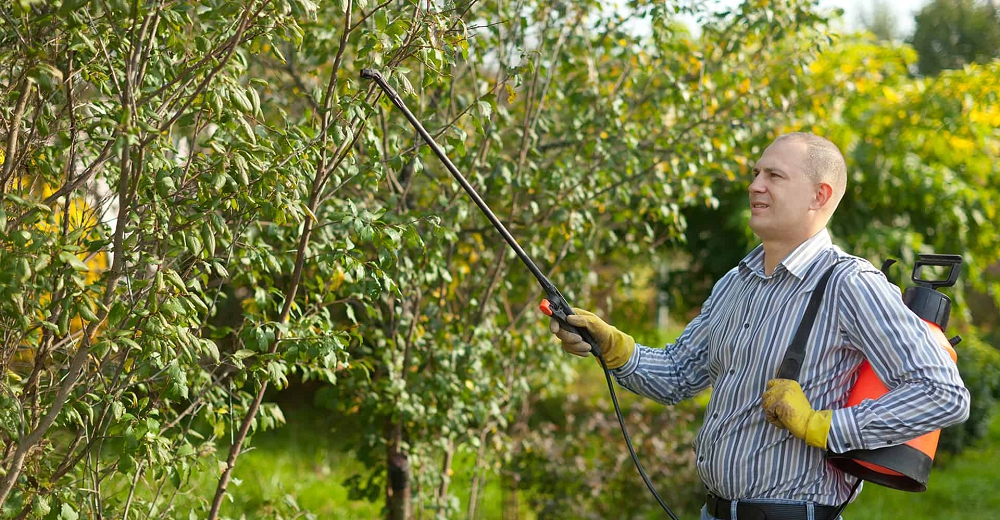
How to spray for Brown rot
There are so many spray systems available that you can be sure there’s one to suit your size of garden or farm.
We’re always very much in favour of keeping costs down. It’s not worth spending hundreds (or thousands) of dollars on a system that’s too big and sophisticated for your needs.
On the other hand, you may be able to save yourself many, many hours (and therefore $$) by investing in a sprayer that will do the job you need quickly and efficiently.
The ideal spray system depends on a few things:
- the number of trees you have
- your topography (i.e. how steep your block is)
- the equipment you already have (e.g. whether you have a tractor or quad bike to pull a spray tank)
- available budget
- your capacity to use different types of equipment, and
- your goals for your fruit trees.
If you’re hoping to sell some of your fruit, for example, make sure you can spray quickly, easily, and as often as you need to. It might just be what makes the difference between picking a crop … or not!
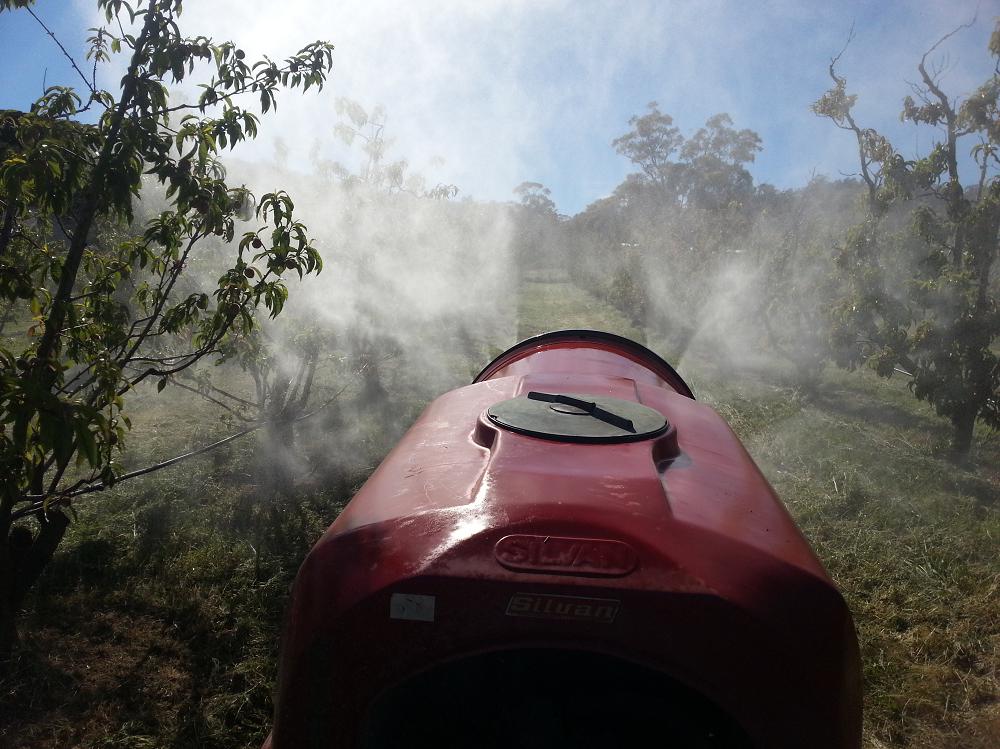
Related Articles
Dieback and cankers on fruit trees
Die-back and cankers on your fruit tree may be a sign that it has root rot caused by Phytophthora infection.
How to avoid depressing mistakes with your fruit trees
Creating an Action Plan for your fruit trees can help you avoid depressing mistakes, and feel more relaxed about your garden.
What are those brown marks on my apples?
Brown marks on your apples can be a sign that something’s wrong, or it can be a naturally occurring condition that’s rarely seen these days.
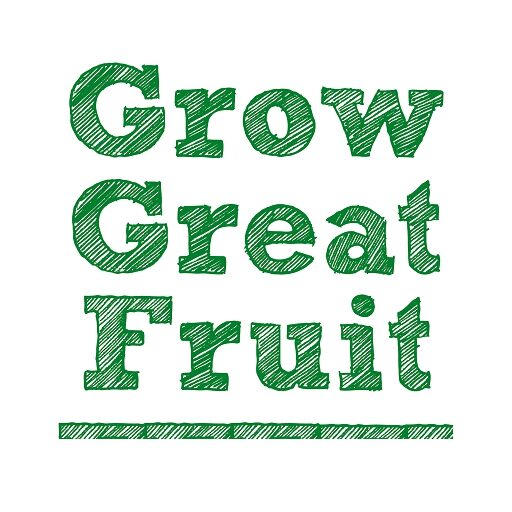
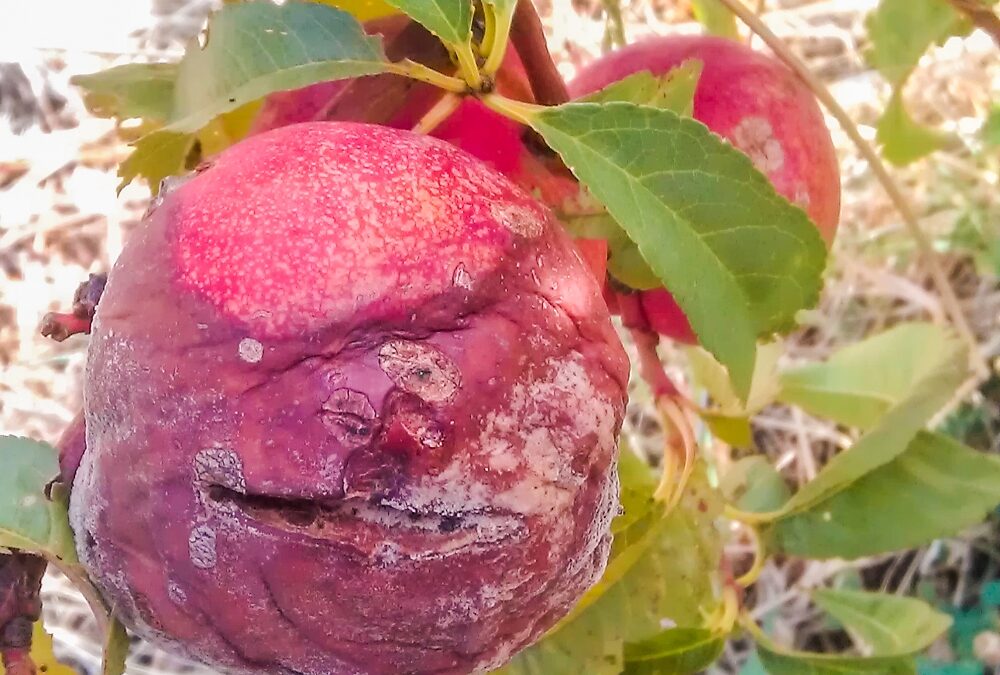
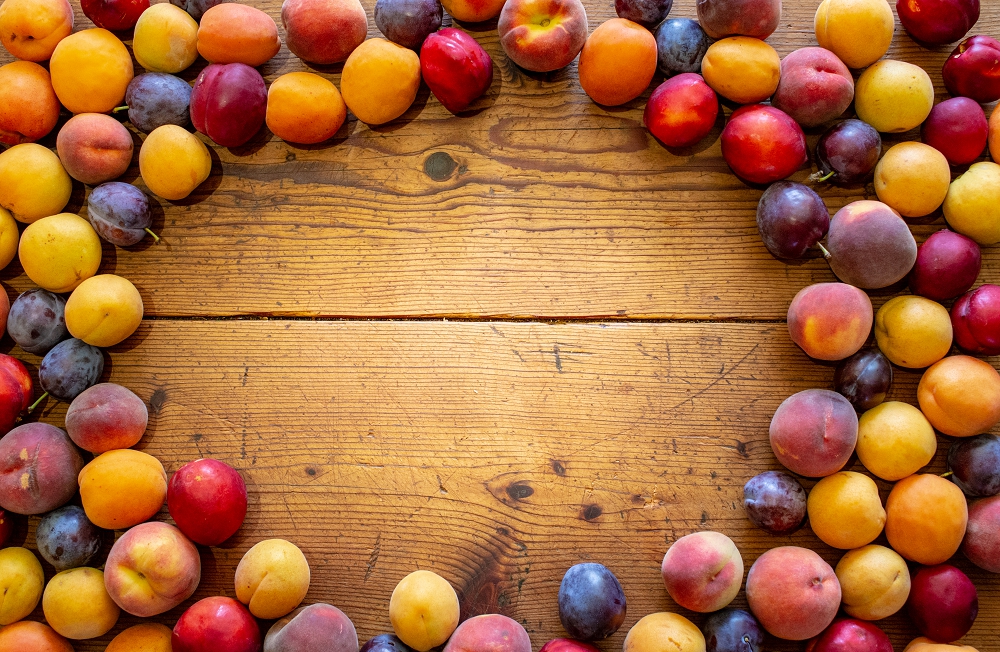
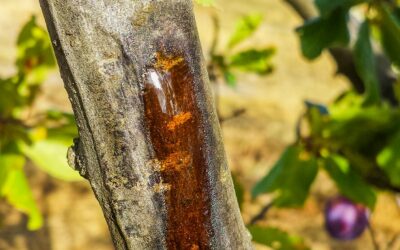
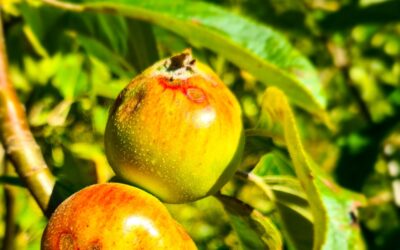
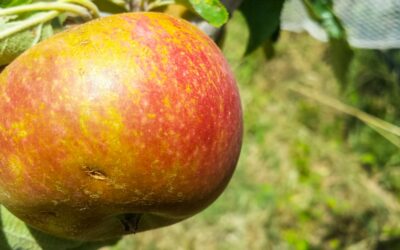
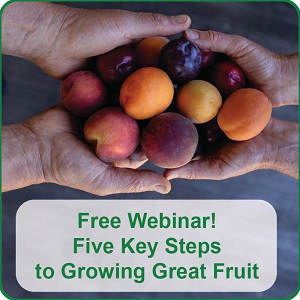
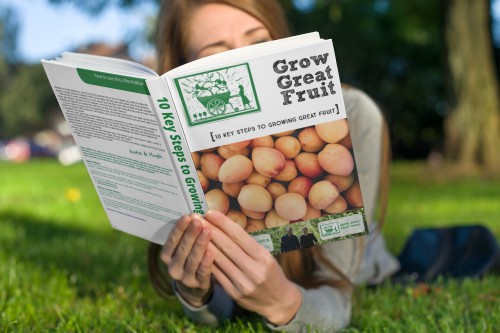
we have abouthalf a dozen plums and nectarines and white peaches that suffer every year despite prevntative early spraying ..How often and with what doyou spray, please?
Hi Robbie, we use an allowable copper formulation e.g. Bordeaux early in spring (at slightly different times depending on the fruit type), and then follow that up with regular wettable sulphur sprays before any forecast rain. We’ve included our recommended spray program in the short course called “Better Organic Fruit with Wise Organic Spraying” – https://growgreatfruit.com/product/better-fruit-with-wise-organic-spraying/.
Cheers, Katie